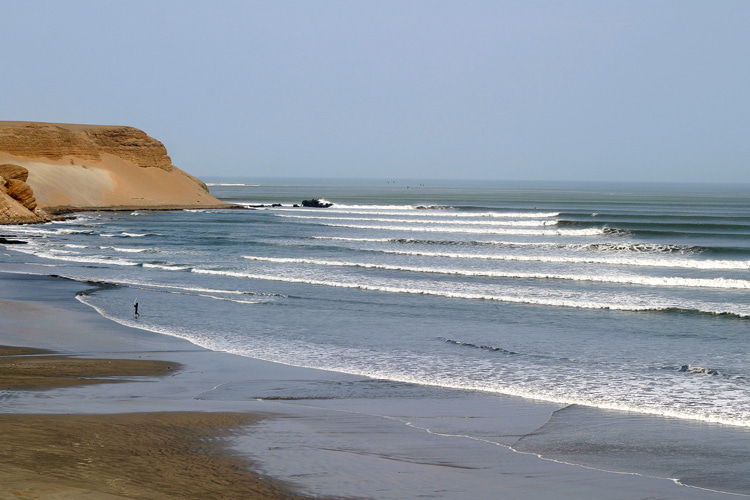Welcome to Chicama, La Libertad, Peru. Get ready to take off on the longest wave in the world and ride it for minutes and hundreds of yards.
Located in the north of Peru and facing the South Pacific Ocean, Chicama is a geological and bathymetric diamond created by Nature.
The iconic Peruvian surf break is located 370 miles (600 kilometers) northwest of the country's capital and attracts thousands of surfers from all corners of the globe.
Chicama is a spiritual and epic experience that an average intermediate surfer can easily enjoy to the fullest.
Hawaiian surfer Chuck Shipman was the first to spot the dreamy, natural phenomenon from the air in 1966.
"Upon arriving at Honolulu, Shipman phoned the news back to Lima," underlines Matt Warshaw, author of "The Encyclopedia of Surfing."
"In September of that year, a group of top Peruvian surfers, including Carlos Barreda, Oscar Malpartida, and Ivo Hunza, drove north to Chicama and became the first surfers to ride the break."
Peru's most famous wave can get crowded, especially on idyllic days, despite reaching the shores in a relatively remote and inhabited region.
And what's fascinating is that, at Chicama, nearly all waves break perfectly.
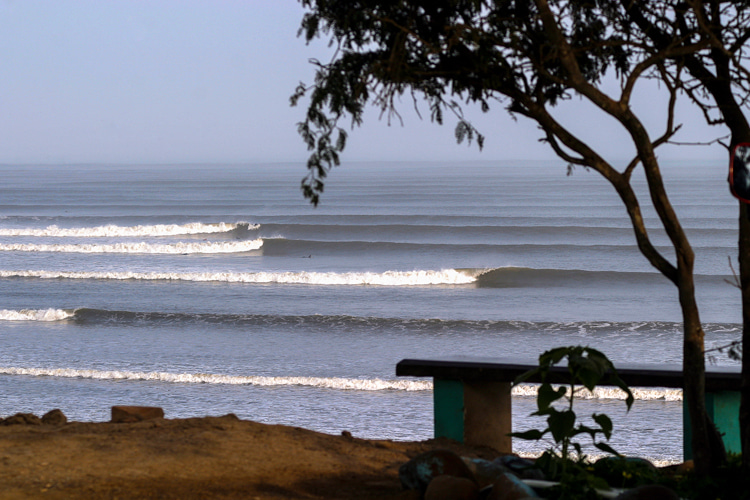
50 Lines of Waves
So, what makes Chicama so unique and mesmerizing?
Chicama is a classic point break producing an endless left-hand wave that peels off as far as your eyes can see.
The spot is just one of the few surf zones of a wave-rich stretch of coast - Puemape, Punta Prieta, Pacasmayo, and Huanchaco are just a few good examples.
The World Surfing Reserve of Huanchaco is home to the "caballitos de totora," one of Humanity's oldest known examples of wave riding craft.
Interestingly, the wave commonly known as Chicama is actually located in the fishing town of Puerto Malabrigo, also unofficially called Puerto Chicama.
But how can the Peruvian wave goddess shine so bright, surrounded by desert territories, arid plains, and landscapes?
The secret lies in a strategically and heavenly placed headland that welcomes south and southwest swells and bends the incoming wave trains toward the gently curved long bay.
The optimal surfing formula is then punctuated by the prevailing offshore southerly and southeasterly winds or no-wind, glassy conditions.
On memorable days, you can witness and count more than 50 lines of waves marching from the horizon toward the shore.
The water temperatures are always relatively cool and cold due to the influence of the Humboldt Current that runs along South America's western coast.
Fog and low air temperatures are recurrent at Chicama, so make sure to bring a warm 3/2 mm or 4/3 mm wetsuit for the cooler months (May-October).
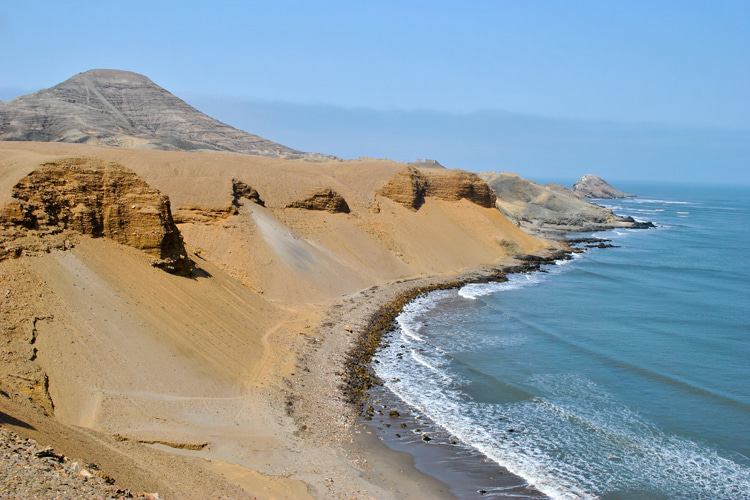
The Length of the Ride
Hailed as the longest surfing wave on Earth, Chicama provides a left-hander that peels for up to 2.5 miles (four kilometers).
The take-off point is near the headland, and the ride will take surfers all the way down to the local pier, i.e., the "Muelle de Malabrigo."
Although the five sections don't quite link up, you may get the most out of the arena's full surfable length in three or four rides.
The five sections are La Isla, El Cape, El Point, El Hombre, and El Pueblo.
They will all provide different perspectives and temperaments, like five contrasting beaches.
The further you travel down the line, the faster and hollower the wave gets.
The perfect wave at Chicama could last four minutes - 240 seconds of pure euphoria.
Chicama's reputation comes with a price.
You will struggle to surf more than one wave if you're not physically fit. Even in-form professional athletes feel the stress the Peruvian gem puts on arms, shoulders, and legs.
The best way to get back to the line-up after a long run is to come in and walk down the beach back to the original take-off spot.
In other words, paddling back is out of the question and unnecessary.
Surf tourists staying at Chicama hostels, guest houses, and surf resorts can hitch a ride from the local businesses' motor-powered inflatable boats to the line-up.
You can also pay one sol and get a cab lift to the starting point - La Isla.
So, paradoxically, at Puerto Malabrigo, your most challenging opponent will be your body - not the elements.
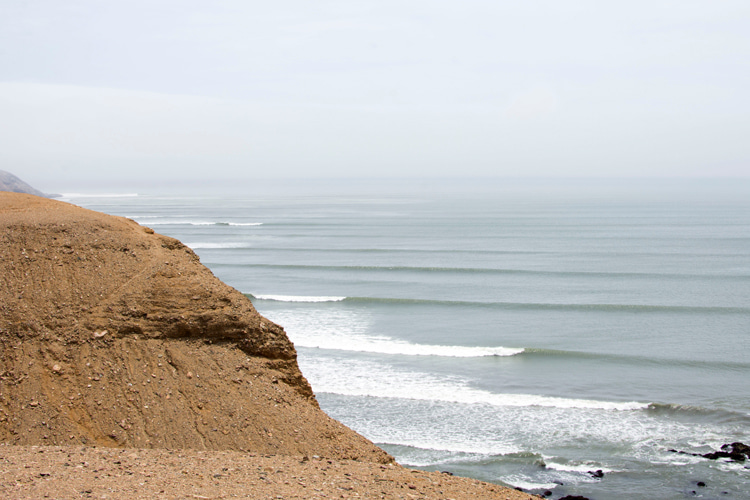
A High-Performance Left-Hander
Despite its sandy bottom, you will notice a few rocky areas here and there at low tide and urchins.
Barreling opportunities are rare, but they do exist. They need a specific swell size and direction to shine to life.
However, Chicama is not about finding the perfect tube.
Instead, it's a consistent, high-performance wave where you can unleash your power surfing skills, carves, roundhouse cutbacks, and top-to-bottom surfing.
Are you a regular footer?
That's good news - you'll have plenty of clean, soft-flowing walls to improve and fine-tune your backside wave riding technique.
It can be a relatively forgiving wave, but keep your eye - and board - close to the roller's pocket and energy zone.
Chicama's laid-back back and relaxed vibes should not be taken for granted. Make sure to respect the locals.
Don't be a wave hog - wait for your turn or share the ride with your fellow surfers. Then, embark on a four-to-six-foot locomotive.
As a general rule of thumb, the bigger the wave, the better it gets.
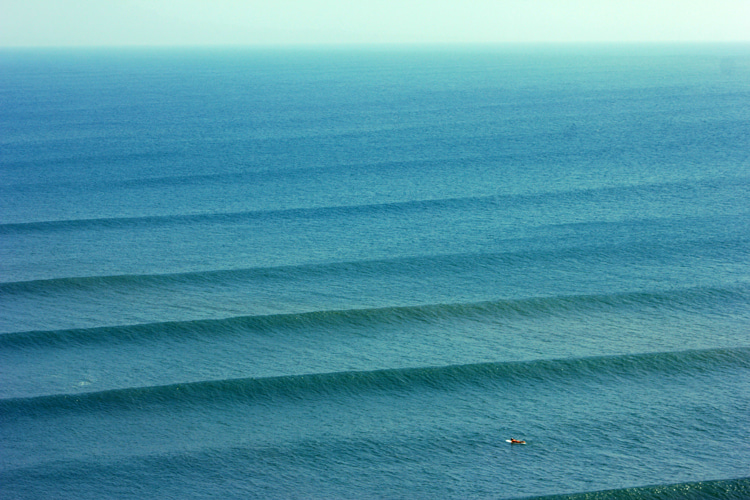
When and How to Get to Chicama
Peru is close to the equator, so in a way similar to Hawaii, it has a wet/rainy season (summer) and a dry/foggy season (winter).
The wet season runs from December to March, and the dry season runs from May to September.
The best time of the year to surf Chicama is from April through October and, in particular, when the Roaring Forties push swell energy toward Peru.
To get to the world's longest left-hand surfing wave fast and effortlessly, catch a flight to Lima and then book a connection to Trujillo.
There are plenty of accommodations and historical sites at Peru's famous wave, and you're not far from the Andes.
The food is also delicious, with ceviche, one of Peru's national treasures, on top of the must-taste menu.
Make sure to carry or rent a shortboard with good flotation for the small days and a bigger board for the epic and historic swells.
Chicama is the perfect surf break for capturing the picture or video clip of your life.
If you're able to surf the magical wave from beginning to end, you can basically hang up the leash - it's the ultimate surfer's dream.
With its geometrically flawless lines and walls of cold water, it is one of those waves any surfer should ride before they die.
"I really think Chicama is the 'Disneyland of Surfing,'" Peruvian surfer Roberto Meza once said.
"Visually, it is a masterpiece and makes me proud to be Peruvian. The perfection of the waves is amazing - they're hollow, fast, and very long."
Wave riding's unforgettable thrill is waiting for you in Chicama, one of the wonders of the surfing world.
Chicama, Peru | ID and X-Ray
Location: Malabrigo, La Libertad
Type of Wave: Left-Hand Point Break
Best Swell Direction: S-SW
Best Wave Size: Chest to Head-High (4-6 feet)
Best Wind Direction: SE or No Wind
Best Tide: Low to Mid
Best Time to Surf: April through October
Best Board: Funboard, Shortboard, Semi-Gun
Skill Level: Beginner, Intermediate, Advanced, and Professional
Crowd: Good Days, Only
Water Quality: Good
Hazards: Urchins
Bottom: Sand
Water Temperature: 62-70 °F (17-21 °C)
Getting There: Plane, Bus, Taxi
Nearby Surf Shops and Rentals: Yes
